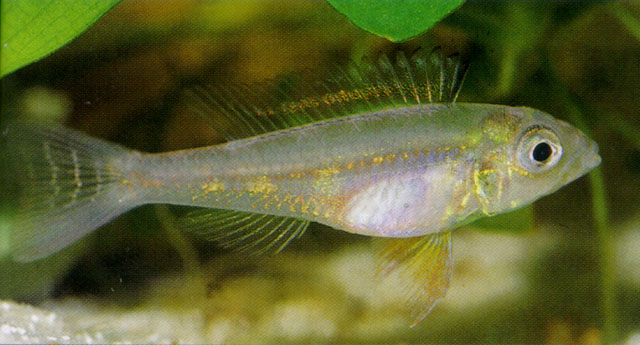| Cichlidae (Cichlids), subfamily: Geophaginae |
| 3.8 cm SL (male/unsexed) |
|
benthopelagic; freshwater |
| South America: Orinoco River basin, from the Inírida River (Colombia) to Maripa, (Venezuela) |
|
Dorsal spines (total): 7-8; Dorsal soft rays (total): 14-16; Anal spines: 2-2; Anal soft rays: 6-8. This species is distinguished from all other cichlids by having only two (vs. three or more) anal spines; differs from B. opercularis by lacking anguloarticular lateralis canal; 3 or 4 (vs. 5) skin openings and 2 or 3 (vs. 4) canal fragments representing the dentary lateralis canal; dorsal fin with slightly prolonged anterior spines and lappets; modal dorsal fin count VII.15 (vs. VIII.14); and 6 (vs. 5) dark spots along the middle of the side (Ref. 86446). |
| The type locality was a shallow laguna about 25 m wide, with transparent water, vegetation resembling needlegrass; water temperature 34°C; associated with another cichlid species,
Crenicara filamentosum, the dominant species at the locality (Ref. 86446). |
|
Least Concern (LC); Date assessed: 22 October 2020 Ref. (130435)
|
| harmless |
Source and more info: www.fishbase.org. For personal, classroom, and other internal use only. Not for publication.

